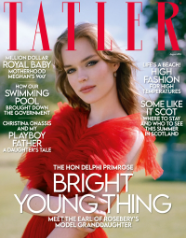Language and Representation
Language
1. Write a summary of the notes from our in-class analysis of the episode. You can use your own notes from the screening in class or this Google document of class notes (you'll need your GHS Google login).
Camera work and sound:
Music - the theme tune to Doctor Who. Very science-fiction - sets genre from the beginning.
Graphics on screen: title of show and episode. Simple text/font.
Slow, clunky camera movement (due to technology in the 1960s).
Sound: hum of TARDIS (helps create science-fiction genre).
Mise-En-Scene
Susan - first introduced dancing and dressed as a 1960s teenager (costume). Seems to be both a typical teenager and an alien.
Costume and hair typical of the 1960s.
School - creates a personal identity for the audience.
Narrative and Genre
The opening title sequence is like a rocket taking off - sci-fi genre and links to the 1960s space race.
Enigma codes: the mystery of Susan’s home. French Revolution book - “I’ll have finished it” “That’s not right”... suggests time travel.
2. How can we apply narrative theories to this episode of Doctor Who?
Todorov Equilibrium: At the beginning of the episode, Sally Sparrow is living a relatively ordinary life. She encounters strange messages written to her on walls
Propps character types: Doctor presented as a villain
Barthes's enigma and action codes:
Levi-Strauss's binary opposition:
Light/dark - lost torch. The torch represents light, knowledge, and safety, light and dark shows danger, ignorance, and vulnerability.
3. In your opinion, what is the most important scene in the episode and why?
In my opinion, the most important scene in the episode is when Sally Sparrow explores the abandoned house and encounters the Weeping Angels for the first time. This is because it brings the tension up as you are wondering what is going to happen next scene is filled with subtle clues and hints about the nature of the Weeping Angels and their abilities. From the ominous warning written on the wall to the sudden disappearance of the statues, The scene marks the mystery that unfolds throughout the episode.
4. What genre is An Unearthly Child and how can you tell? Make specific reference to aspects of the episode.
The genre that is An Unearthly Child is Magic and Science Fiction. The TARDIS itself is a piece of advanced alien technology that gives understanding. It also reveals an ordinary police box, the interior is vast and futuristic the representation of the science fiction show.
5. How does An Unearthly Child reflect the social and historical contexts of the 1960s?
An Unearthly Child reflects the social and historical contexts of the 1960s The episode begins in a school setting, reflecting the importance placed on education during the 1960s as education is important so setting it in a school supports the idea. In the 1960s, the way Susan Foreman, the Doctor's granddaughter, was portrayed shows how people's views on gender roles were changing. Susan is shown as smart, and self-sustaining, going against the traditional expectations of that time.
Representations
1. What stereotypes of men are reinforced and subverted in Doctor Who: An Unearthly Child? How?
Stereotypes of men are reinforced and subverted in Doctor Who in that the male teacher, Mr Ian is like the leader-type guy showing he is smart and in charge. But then you have the Doctor who is completely different from him he's not a typical guy as he is quirky, smart, kind, and unpredictable as he thinks outside the box with different ideas which is different about what men are supposed to be like.
2. What stereotypes of women/girls are reinforced and subverted in Doctor Who: An Unearthly Child? How?
The stereotypes of women/girls are reinforced and subverted in Doctor in that Barbara seems caring, like a mom. Susan sees weak and needs help. For subverted stereotypes, Susan is smart and brave and Barbara is Smart and b brave too, just not like a mum.
3. How do the representations of young people and old people in An Unearthly Child reflect the social and historical context of the 1960s?
Young people were portrayed as going on adventures, and rebellious, reflecting the years of how they were young at that time and that they were just moody with a lot of attitude. While old people were shown as smart authority figures, showing respect for elders in society. This shows how the older and younger people of how different they were.
4. What representations of race/ethnicity can be found in Doctor Who: An Earthly Child? Is this surprising or not? Give reasons for your answer and consider the historical/cultural context (the 1960s). Has this changed in more recent series of Doctor Who?
The representations of race/ethnicity are that there was mostly white and not any sort of diversity at all so that there can be different races, and nationalities to make it more interesting and suitable for the audience to watch and this is not surprising because there can be a lot of improvements to make it fair and equal for everyone to see.
5. How is social class represented in An Unearthly Child? Think about how education and knowledge are presented in the episode?
Social class is subtly represented through the professions and interactions with each other. The teacher, Mr Chesterton, expresses the educated middle class, While the Doctor challenges with intelligence, suggesting a departure from the class structures. This reflects how education and knowledge of social class with characters like Mr Chesterton putting values while the Doctor interrupts.


Comments
Post a Comment